SOAP with Attachments API for Java


Project Requirement
In this section we will develop SOAP application having a text attachment.
Then it retrieves the content of the attachment file and display it on the screen
Solution
- Make a java application project
- Create a java class
- Write the source code
- Make a attatchment text file
- Compile the code
- Build project
- Execute the application
- Open the Netbeans
- Take a new Java application project as shown below in Figure.1
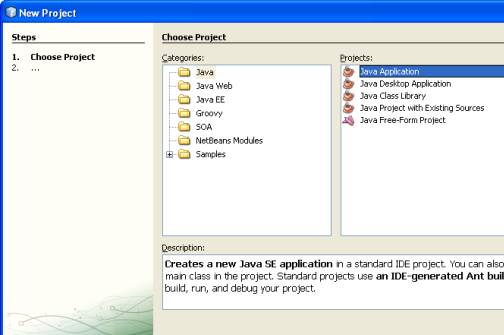
Figure 1
- Give the project name as SOAP-saaj as given below in Figure. 2

Figure. 2
- This creates the java project.
Creating the java Class
- Right Click on the project
- Select NewàJava Class as shown below in Figure. 3.
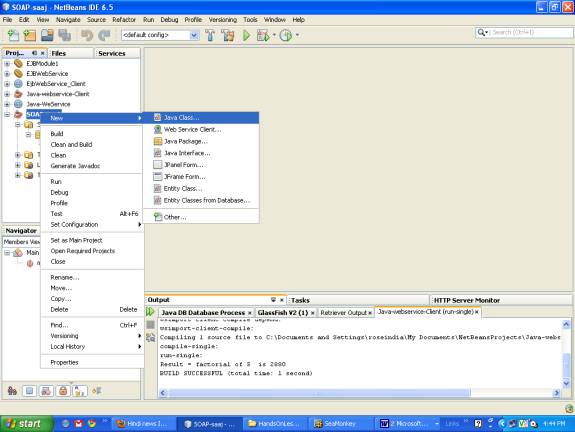
Figure. 3
- Give the file name as attach1.java as shown below in Figure. 4.
- This creates the attatch1.java.
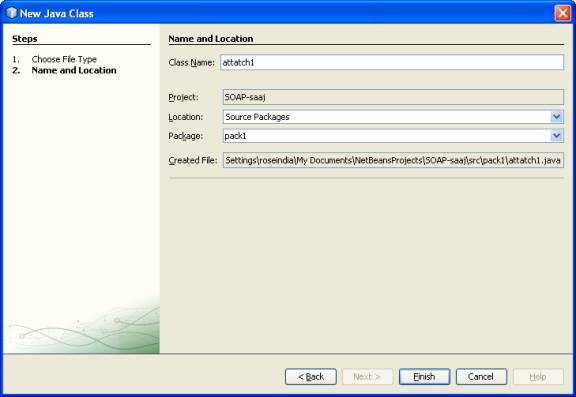
Figure. 4
Change the content of java file
Now make the changes in the code of attach1.java in file as code given below.
package pack1;
import java.io.*;
import java.util.Iterator;
import javax.xml.soap.*;
public class attatch1 {
public static void main(String[] args) {
FileReader fr = null;
BufferedReader br = null;
String line = "";
try {
MessageFactory messageFactory = MessageFactory.newInstance();
SOAPMessage message = messageFactory.createMessage();
SOAPHeader header = message.getSOAPHeader();
SOAPBody body = message.getSOAPBody();
header.detachNode();
AttachmentPart attachment1 = message.createAttachmentPart();
fr = new FileReader(new File("rose1.txt"));
br = new BufferedReader(fr);
String stringContent = "";
line = br.readLine();
while (line != null) {
stringContent = stringContent.concat(line);
stringContent = stringContent.concat("\n");
line = br.readLine();
}
attachment1.setContent(stringContent, "text/plain");
attachment1.setContentId("attached_text");
message.addAttachmentPart(attachment1);
Iterator iterator = message.getAttachments();
while (iterator.hasNext()) {
AttachmentPart attached = (AttachmentPart) iterator.next();
String id = attached.getContentId();
String type = attached.getContentType();
System.out.println(
"Attachment " + id + " has content type " + type);
if (type.equals("text/plain")) {
Object content = attached.getContent();
System.out.println("Attachment contains:\n" + content);
}
}
} catch (FileNotFoundException e) {
System.out.println("File not found: " + e.toString());
System.exit(1);
} catch (IOException e) {
System.out.println("I/O exception: " + e.toString());
System.exit(1);
}
catch (ArrayIndexOutOfBoundsException e)
{
System.out.println("array exception" +e.toString());
}
catch (Exception ex) {
ex.printStackTrace();
}
}
}
- Now in the code makes modification as code given below.
package pack1;
import java.io.*;
import java.util.Iterator;
import javax.xml.soap.*;
public class attatch1 {
public static void main(String[] args) {
FileReader fr = null;
BufferedReader br = null;
String line = "";
try {
MessageFactory messageFactory = MessageFactory.newInstance();
SOAPMessage message = messageFactory.createMessage();
SOAPHeader header = message.getSOAPHeader();
SOAPBody body = message.getSOAPBody();
header.detachNode();
AttachmentPart attachment1 = message.createAttachmentPart();
fr = new FileReader(new File("rose1.txt"));
br = new BufferedReader(fr);
String stringContent = "";
line = br.readLine();
while (line != null) {
stringContent = stringContent.concat(line);
stringContent = stringContent.concat("\n");
line = br.readLine();
}
attachment1.setContent(stringContent, "text/plain");
attachment1.setContentId("attached_text");
message.addAttachmentPart(attachment1);
Iterator iterator = message.getAttachments();
while (iterator.hasNext()) {
AttachmentPart attached = (AttachmentPart) iterator.next();
0
String id = attached.getContentId();
String type = attached.getContentType();
System.out.println(
"Attachment " + id + " has content type " + type);
if (type.equals("text/plain")) {
Object content = attached.getContent();
System.out.println("Attachment contains:\n" + content);
}
}
}
catch (FileNotFoundException e) {
System.out.println("File not found: " + e.toString());
System.exit(1);
}
catch (IOException e) {
System.out.println("I/O exception: " + e.toString());
System.exit(1);
}
catch (ArrayIndexOutOfBoundsException e) {
System.out.println("array exception" +e.toString());
}
catch (Exception ex) {
ex.printStackTrace();
}
}
}
1
Creating text attatchment file
- Now Right Click on the project folder
- Select the Project properties
- Copy the project folder location as given in Figure 5 below.
- Open it in Window Explorer
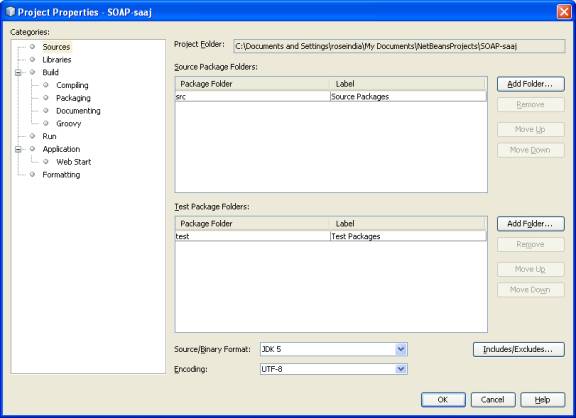
Figure. 5 2
- In this folder make a rose1.txt file which have been given as the argument name in the above code
- Give some content as
Hi
Welcome to the SAAJ Application
This is the Example of Attached Text Message.
Best Regards
RoseIndia
- Now run the file.
- Right Click and select run file
- It executes and give the output as given below in Figure 6.
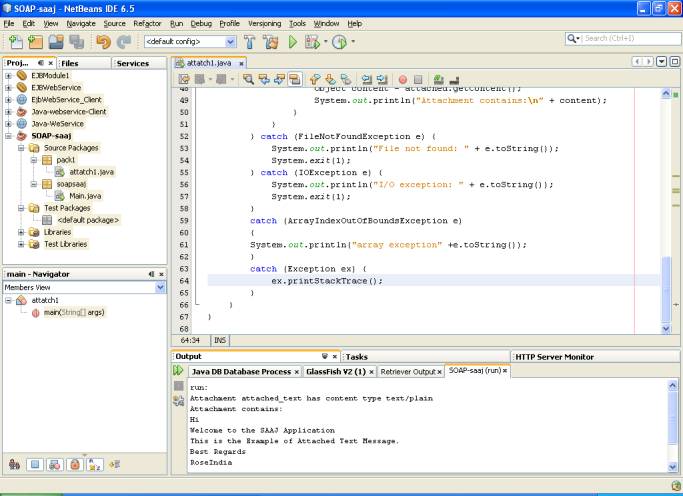
Figure 6 3
API used in the program
This file uses the file handling API such as FileReader and
BufferedReader and Web Service API as given below
- MessageFactory:-It is a factory for creating SOAPMessage objects A MessageFactory object is created by newInstance () method in SAAJ client file.
- SOAPMessage:-It is the root class for all SOAP messages. A SOAPMessage object consists of a SOAP part and optionally one or attachment parts. The SOAP part for a SOAPMessage object is a SOAPPart object. SOAP part contains information used for message routing and identification. All data in the SOAP Part of a message must be in XML format.
- SOAPHeader:- SOAP Header is the optional Element. It contains data for application in XML form.For example, transaction semantics, authentication information, and so on, can be specified as the content of a SOAPHeader object
- SOAPBody :- It is the required Element of the SOAP.It has the main message contents in the XML form.
- AttachmentPart :-It is a single attachment to a SOAPMessage object. A SOAPMessage object may contain zero, one, or many AttachmentPart objects. Each AttachmentPart object consists of two parts, application-specific content and associated MIME headers.
